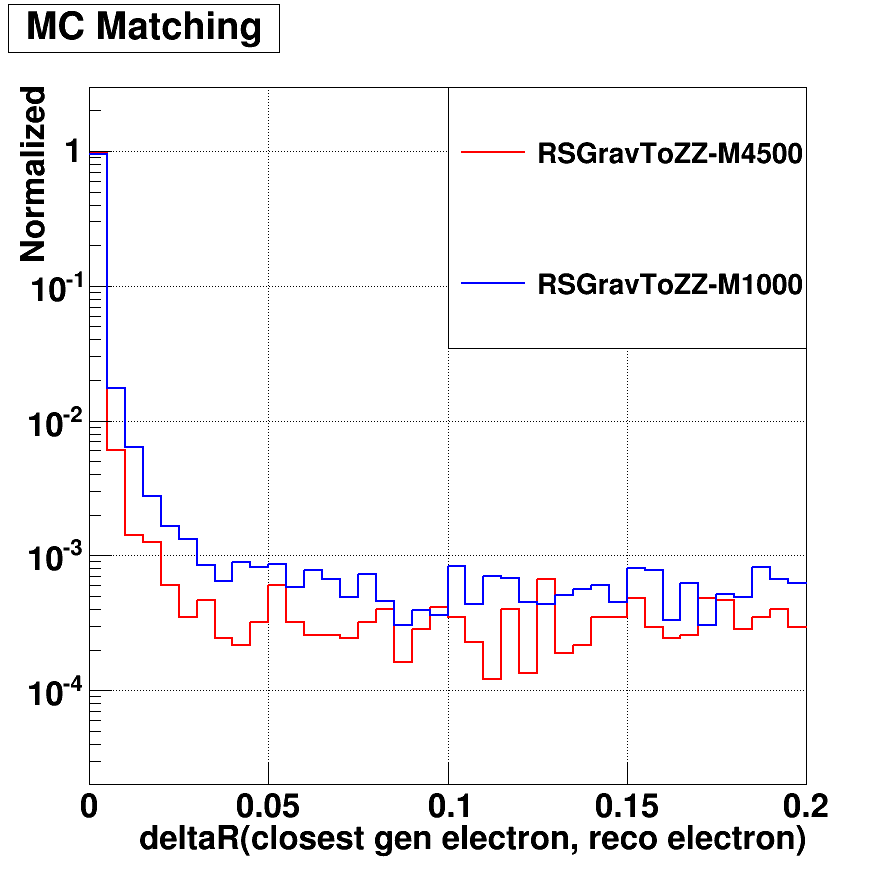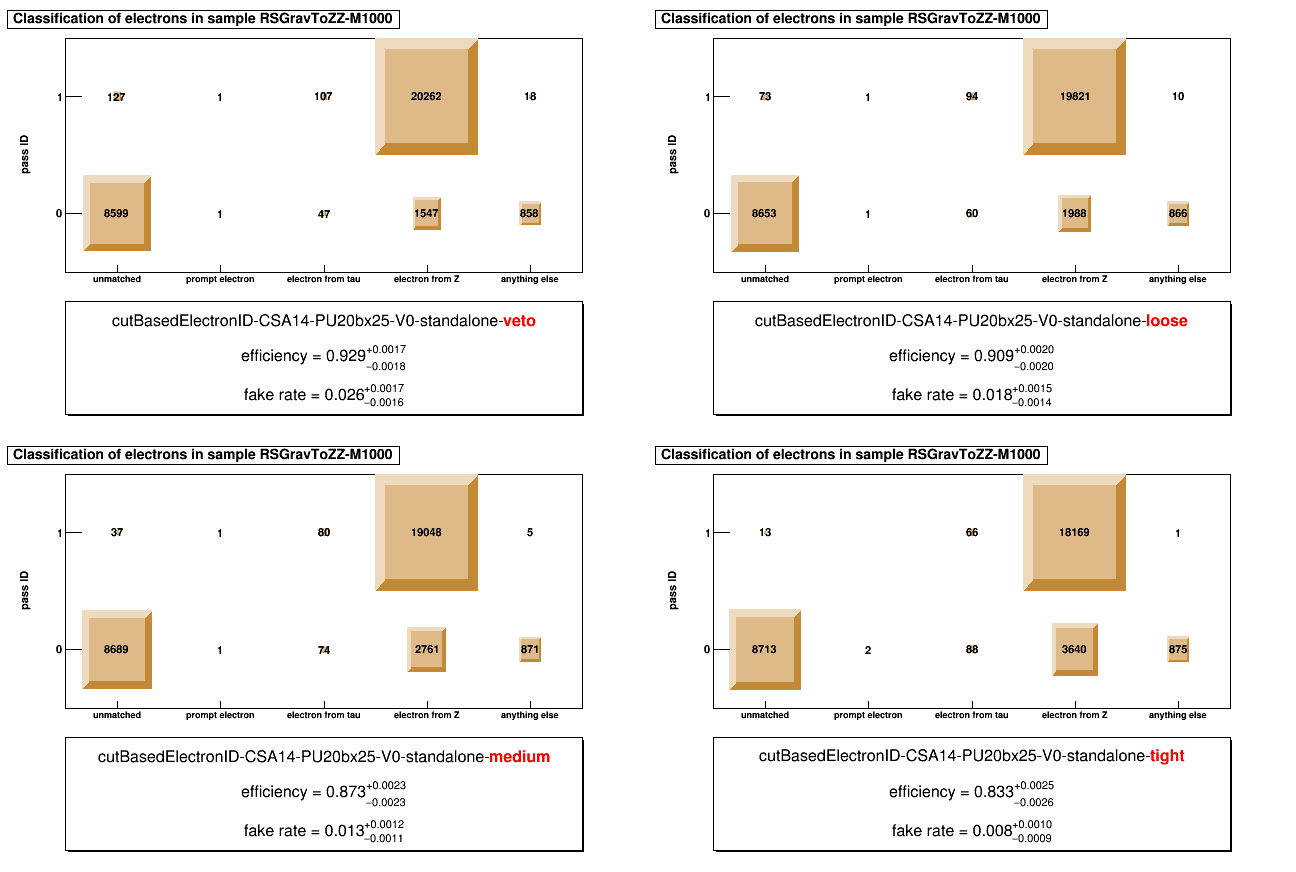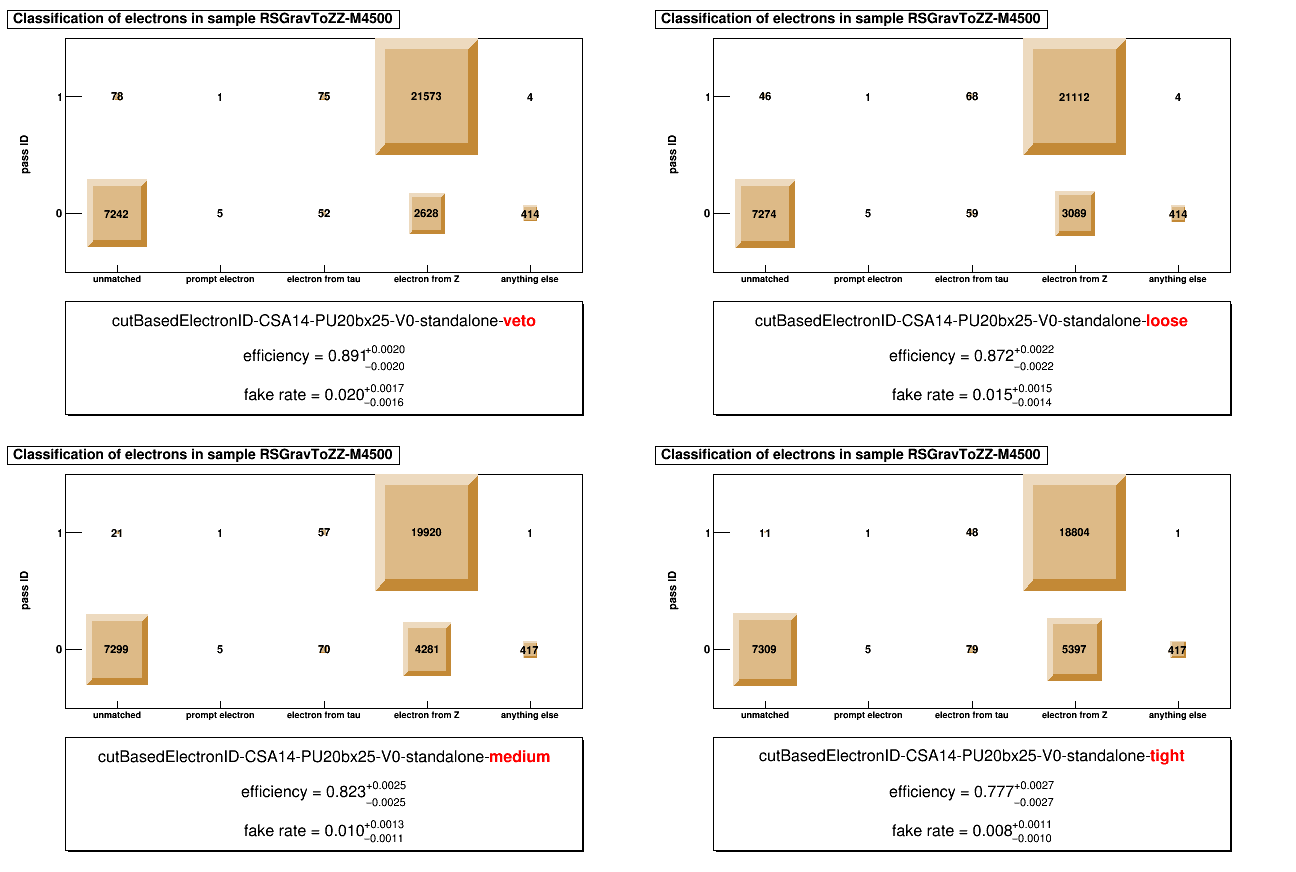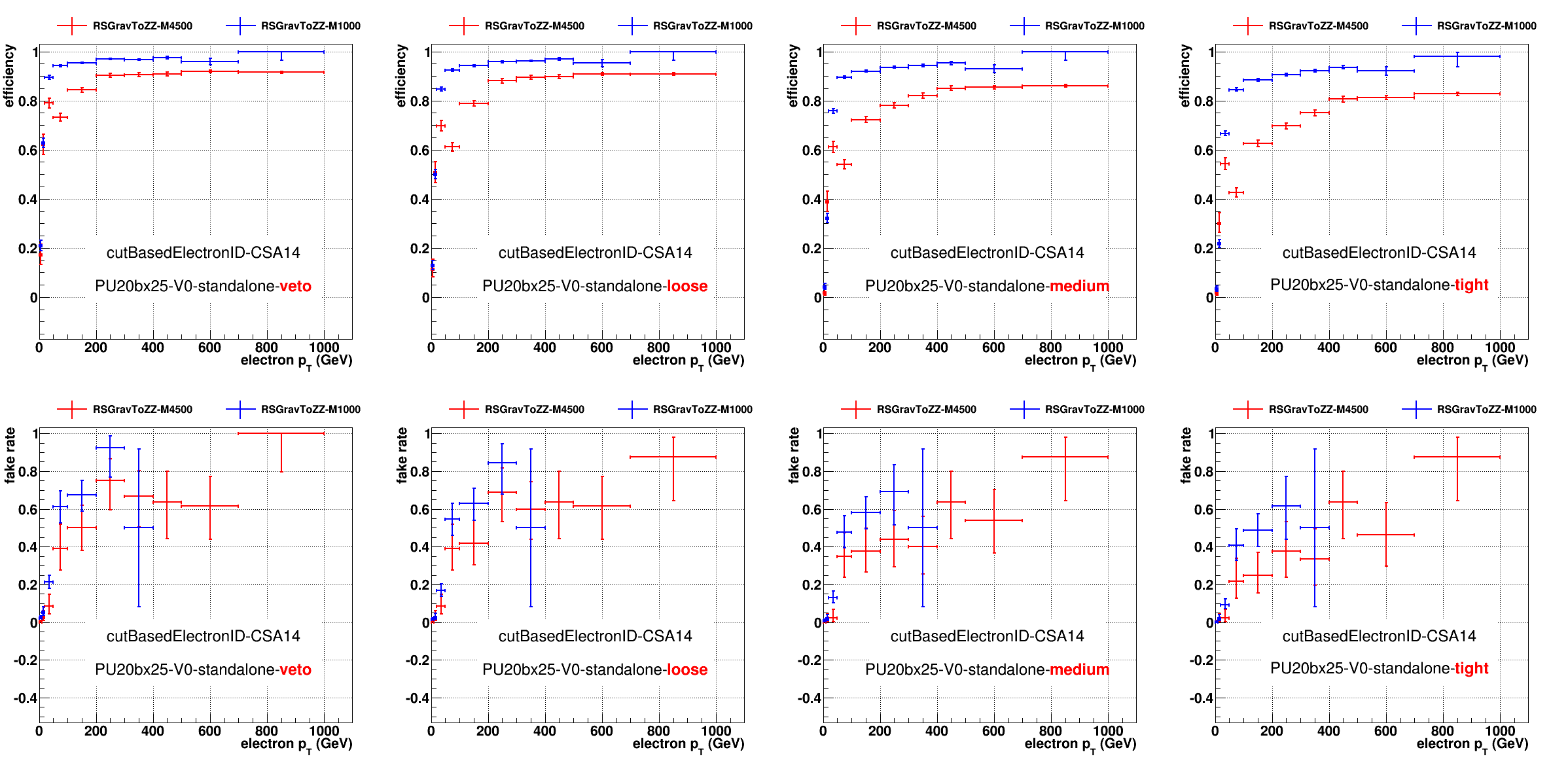Efficiency and fake rate of the cut-based electron ID for Run 2.
Samples
Signal samples from the CSA production can be found in
DAS
, by typing in the query window:
- dataset = /RSGravToZZ*/*Spring14dr*/AODSIM
To implement the cut-based electron identification we produced private MINIAODSIM samples with few events (100K), using the common ID and Isolation Toolkit
CITK
.
To access the private samples from lxplus, you have to obtain a valid grid proxy (
voms-proxy-init --voms cms). The
process.source in your configure file should look like the following:
process.source = cms.Source("PoolSource",
fileNames = cms.untracked.vstring('root://cmsxrootd.fnal.gov//store/user/jruizvar/RSGravToZZ/M1000/RSGravToZZ_kMpl01_M-1000_Tune4C_13TeV-pythia8_MINIAODSIM_PU20bx25_1.root')
)
Matching categories
MINIAODSIM samples contain information about generated and reconstructed particles. Our matching algorithm identifies the closest genElectron for every recoElectron, as well as the particle ID of the genElectron's ancestor.

The
deltaR and PID matching allows to define four categories as described in the following table:
| 1 |
Unmatched |
deltaR(closest gen electron, reco electron) > 0.2 |
| 2 |
Prompt electron |
deltaR(closest gen electron, reco electron) < 0.2 (without ancestor) |
| 3 |
True electron from tau |
deltaR(closest gen electron, reco electron) < 0.2 AND (ancestor PID == 15) |
| 4 |
True electron from Z |
deltaR(closest gen electron, reco electron) < 0.2 AND (ancestor PID == 23) |
| 5 |
Anything else |
What remains from above |
Efficiency and fake rate
The efficiency is the number of signal electrons passing the ID divided by the total. The fake rate was estimated in a similar way but using the non-signal electrons.

To access the
electronID
, which is a member function of the
pat::Electron class, we used a line like the following:
int passID = ( el->electronID("cutBasedElectronID-CSA14-PU20bx25-V0-standalone-veto") > 0.5 );
Working points
The cut-based electron identification recommended by EGM for Run 2 analyses, determines four working points:
veto,
loose,
medium, and
tight. A detailed description
here
.
Isolation
Particle flow isolation with delta beta correction is calculated as follows:
reco::GsfElectron::PflowIsolationVariables pfIso = el->pfIsolationVariables();
absiso = pfIso.sumChargedHadronPt + std::max(0.0 , pfIso.sumNeutralHadronEt + pfIso.sumPhotonEt - 0.5 * pfIso.sumPUPt );
relIsoWithDBeta = absiso/pt;
Internally, the isolation variables use the standard recommended cone size
deltaR = 0.3. Details
here
.
* Electron isolation after different cut-based selections

Preliminary results
To estimate the efficiency and fake rate of the electron identification, we classified the electrons according to its matching category and the
passID associated to the
cutBasedElectronID-CSA14 working points.
The classification for each working point is displayed as a TH2 histogram with two bins in the Y axis associated to the passID variable, and four bins in the X axis corresponding to the matching categories. The number of entries inside each box of the histogram indicates the number of electrons in a given matching category with a given passID.
- Electron classification, global efficiency, and fake rate using sample RSGravToZZ 1 TeV

- Electron classification, global efficiency, and fake rate using sample RSGravToZZ 4.5 TeV

Efficiency and fake rate as function of genElectron's pT and eta are shown below:
- Efficiency and fake rate as function of genElectron's pT

- Efficiency and fake rate as function of genElectron's eta

- Efficiency as function of deltaR(genElectron1, genElectron2)

- Efficiency as function of deltaR(genElectron1, genElectron2) zoom in the low deltaR region

Software
The analyzer developed for these studies is attached below:
Ongoing work
In addition to the cut-based electron ID, we plan to use the Multivariate Electron Identification for Run 2. Instruction for running the
MVA electron ID in the following
link
.
Comments
 The deltaR and PID matching allows to define four categories as described in the following table:
The deltaR and PID matching allows to define four categories as described in the following table:
 To access the electronID
To access the electronID








